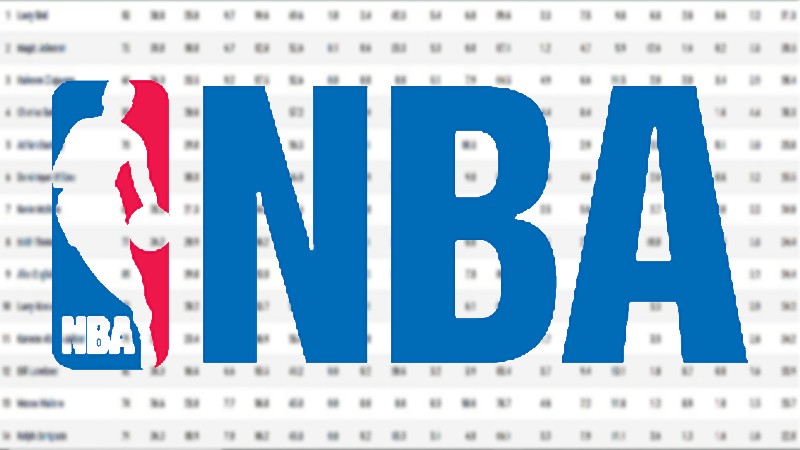Russell Westbrook did it. He just rewrote two all-time triple-double records in the NBA annals. He just got his 42nd TD against Denver yesterday, Philippine time, and secured becoming the second man in NBA history to average a triple double two days earlier in Phoenix.
(See related story: Stat of the Week: Average a Triple Double in 79 Games)
A lot of Westbrook’s critics, though, keep on questioning the validity and importance of his ascendance to the triple double crown. They go from his being unselfish, hard to get along with, doesn’t pass the ball, unimpressive because of his lackluster defense and now this stat padding accusation.
Well, I find that absurd. The hardest stats to pad if one is a point guard are rebounds and blocks because PGs are usually far from the paint and sticks to the opposing pg who is normally hovering in the perimeter.
As many others noticed, there are flaws in Russell’s game like he was turnover prone, that is basically because he has possession of the ball most of the time, and that he bricks three-point shots.
These flaws would generally discourage one to put the ball too much on his hands and have him attempt too many long bombs.
But on the reverse side, his having possession of the ball tends him to produce triple doubles which the Thunder badly needs.
(See related story: Westbrook: The Chase for the Triple-Double Crown)
OKC is inclined to win when he has a TD, they are 33-9, and is only 13-25 when he does not. That ludicrous difference should end the misguided theory that his triple doubles are overrated.
Critics surfaced two major pieces of evidence of the stat padding: (1) the image of big men Steven Adams and Enis Kanter screening their counterparts during free throw attempts of the opponent so Westbrook, the third Thunder in the rebounding area, can get the rebound; and (2) images of Westbrook leaving his man open to shoot jumpers so he can grab rebounds.
The first evidence is obviously by design of the coach, applying a basic concept in basketball, the box out.
It is a common knowledge that one of the scheme of recovering looseball is to have big guys box out other big guys for the smaller guard to pick up the rebound. This picture is oftne played during scrimmages and pickup games, older mentors usually yell “box out” during free throws, showing action of stretching of elbows. The guards would then jumped in to sang the rebound as the big men erases their counter parts from going in the lane.
Whether that’s a cool concept to be applied in the NBA or not, that basic concept is applied to Westbrook’s case. Adams and Kanter are boxing out opposing big men so Russell can secure the rebound for OKC because that increases the chances of securing possession in case of a miss as he can enter the paint upon release, much earlier than the shooter, who has to wait for the ball to hit the rim before he can.
While this strategy may incidentally pad Westbrook’s rebounds, it’s absurd when one questions the application of a basic fundamental skill in the NBA as a deliberate way to pad stats. In fact, it’s the other way around. It’s a brilliant idea of taking advantage of a basic concept when many other teams do not.
The second case is another basic concept applied, the help defense, coupled with Westbrook’s heart, desire, and intensity.
It hard to believe that one can pad rebound stats when his caroms are mainly coming from field goal misses from perimeter jumpers where its landing spot can be anywhere in the court. If indeed, he is leaving his man open, the rebounds he expects should be long.
That is exactly Westbrook’s case. Around 70% of his total rebounds are coming on missed shots from 13+ feet. The largest proportion of those, around 40%, are from 19+ feet.
It is useless for a point guard to leave his man and expect to get as many rebounds as Westbrook is supposedly getting in a situation like this. He may get one or two here and there but that should be it.
Moreover, critics point out that because of his leaving his man, many of these long rebounds are uncontested, meaning Westbrook had zero competition for the boards, because he gets there first.
Isn’t that what it’s supposed to be? Why shouldn’t the Thunder take advantage of Westbrook’s uncanny ability to project where the ball will end. He beats a lot of players to the ball because he has great anticipation skills, reading the flight of the ball, where it will land and gets there first using his quickness.
So, if a team has a point guard of this ability, they can take chances of him leaving his man after a shot and get to the glass. Ditto with him providing help defense near the paint to cause turnovers and have greater chances of securing a defensive board but risking his man to be left open.
It’s a choice the Thunder is making to allow Westbrook to play help defense and subsequently crash the glass. Looks like the team is keen on supporting their main guy do the dirty work. It is usual for guards linger on the perimeter but not for the Thunder, not for Westbrook. He is allowed to crash the glass.
This sentiment would be true, though, if the Thunder parks Westbrook in the shaded lane, which looks unlikely based on how the Thunder approaches their games.
This Westbrook case kinda resemble the 1992 Tony Harris-Yeng Guiao-Swift Mighty Meaty era in the PBA.
Tony Harris was the hottest offensive weapon the league has ever seen at that time. During 1992 third conference, he averaged 60.7 a game. He scored the PBA all-time game high of 105, 98, the third highest ever, just eight days later, an 87 and an 82 points in four separate games. He added 11.4 rebounds and 8.1 assists a game for good measure.
That was by design courtesy of Yeng Guiao, one of my top three greatest strategists in the PBA ever. His tactic at that time was a beautiful ploy. Instead of shackling an offensive runaway train in Harris, he gets its right, not by letting Harris give up possession in the disguise of sharing the ball, but rather unleashing the offensive juggernaut that nobody then could stop at the expense of his other team members so called “happiness”.
Oh, the Mighty Meaties won the championship that conference by a sweep!
Billy Donovan saw a special player in Russell Westbrook, made a system to maximize his talents and to get his team winning, got his other team members to buy in the system and support Westbrook in terms where they don’t have to have the ball, and all of them are contented with their assigned roles resulting with the team winning when they do.
The strategy of letting one dominate the stats may not always result to a championship but, hey, only one team among 30 in the NBA, and one of around 10 in the PBA, can hoist the trophy each season or conference.
In both Westbrook and Harris cases, it would be illogical to call the accumulation of stats by a single person in a team be referred to as intentional padding and overrated when a team is winning because of it.
It’s, in fact a brilliant ploy, and MVPish play.
By: ARMANDO M. BOLISLIS














